Address
304 North Cardinal
St. Dorchester Center, MA 02124
Work Hours
Monday to Friday: 7AM - 7PM
Weekend: 10AM - 5PM
Address
304 North Cardinal
St. Dorchester Center, MA 02124
Work Hours
Monday to Friday: 7AM - 7PM
Weekend: 10AM - 5PM
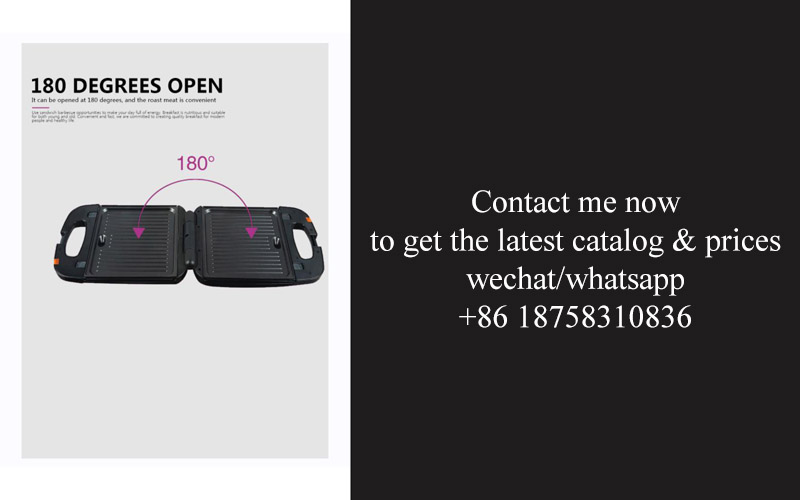
In a world where technology and convenience converge, the kitchen appliance industry has seen a surge in innovation. As consumers seek healthier cooking alternatives and smarter kitchen solutions, the air fryer market has emerged as a beacon of change. This article delves into the evolving trends, the demand for OEM air fryers, the role of mold making service, and the transformative impact of innovative designs on the market. We’ll also explore the benefits of customization, delve into real-world case studies, confront the challenges faced by industry players, and look ahead to the future of kitchen appliances.
In the ever-evolving landscape of kitchen appliances, one trend has been making waves: the rise of OEM air fryers with mold making service. This innovative approach to product customization is not just a fleeting fad; it’s a game-changer that’s reshaping the industry. Let’s delve into the intricacies of this trend and understand why it’s becoming a staple in the market.
The demand for personalized and high-quality kitchen appliances has surged, and OEM air fryers have emerged as a favorite among consumers. These customized appliances not only cater to specific needs but also offer a unique aesthetic appeal. The process of mold making service plays a crucial role in this customization, allowing manufacturers to create air fryers that are not only functional but also visually stunning.
One of the key drivers behind this trend is the increasing health consciousness among consumers. Air fryers have gained popularity for their ability to cook food with minimal oil, making them a healthier alternative to traditional frying methods. As consumers seek out healthier cooking options, they also look for appliances that align with their personal style and preferences.
The mold making service is a sophisticated process that involves creating a precise mold of the desired air fryer design. This mold is then used to produce multiple units with the same design and specifications. The precision and detail that can be achieved through this process are remarkable, offering manufacturers the flexibility to create air fryers that are as unique as their customers.
Innovations in design have been a cornerstone of the air fryer market. From compact, space-saving models to those with advanced features like smart temperature control and programmable settings, the variety is vast. The mold making service has enabled manufacturers to push the boundaries of design, creating air fryers that are not only efficient but also a statement piece in any kitchen.
Market insights and data analysis have shown a consistent growth in the demand for customized air fryers. Consumers are willing to pay a premium for products that offer both functionality and personalization. This shift reflects a broader trend towards consumer empowerment, where customers have more say in the products they purchase.
The benefits of customizing air fryers with mold making service are multifaceted. For manufacturers, it means increased sales and customer satisfaction. For consumers, it means owning a product that truly reflects their individuality. The ability to create air fryers that are tailored to specific requirements, such as size, color, and material, opens up a world of possibilities.
Case studies have highlighted the success stories of companies that have embraced the mold making service for their air fryers. These companies have seen a boost in their brand reputation and customer loyalty. The unique selling proposition of their customized air fryers has set them apart in a crowded market, leading to increased market share and revenue.
Despite the numerous benefits, the industry faces challenges. The mold making process can be complex and costly, requiring advanced technology and skilled labor. However, as the trend continues to gain momentum, manufacturers are investing in the necessary infrastructure to meet the growing demand.
In conclusion, the trend of OEM air fryers with mold making service is a testament to the evolving landscape of kitchen appliances. It’s a trend that is not only meeting consumer expectations but also driving innovation in the industry. As the demand for personalized and high-quality products persists, it’s clear that this trend is here to stay, and it’s shaping the future of kitchen appliances in exciting ways.

In the ever-evolving landscape of kitchen appliances, the demand for OEM air fryers has surged, reflecting a significant shift in consumer preferences and lifestyle choices. These customized fryers, tailored to the specifications of brands and retailers, are not just a product but a symbol of the industry’s adaptability and innovation.
The surge in demand can be attributed to several factors. For starters, health consciousness has become a cornerstone of modern living, with consumers increasingly seeking alternatives to traditional deep-frying methods that are laden with unhealthy fats. Air fryers offer a healthier cooking solution, allowing users to enjoy crispy, golden-brown fried foods with a fraction of the oil.
Moreover, the convenience factor cannot be overlooked. Air fryers are compact, easy to use, and require minimal cleanup, making them a perfect match for busy lifestyles. This convenience is further enhanced when these appliances are customized to fit specific brand identities or to offer unique features that set them apart from the competition.
The trend towards smart appliances has also played a pivotal role in the popularity of OEM air fryers. With the integration of smart technology, these fryers can now be controlled remotely, tracked for energy consumption, and even updated with new features through software updates. This level of connectivity and smart functionality is highly sought after by consumers who are embracing the Internet of Things (IoT) in their homes.
Another driving force behind the demand for OEM air fryers is the emphasis on sustainability. As environmental concerns grow, consumers are looking for appliances that are energy-efficient and have a lower carbon footprint. Customizable air fryers that are designed with energy-saving in mind are increasingly becoming a staple in eco-conscious households.
Brands and retailers are also recognizing the value of customization. By offering OEM air fryers, they can create a unique selling proposition (USP) that resonates with their target market. This could mean incorporating specific design elements, adding proprietary features, or even branding the appliance to align with the retailer’s brand identity. The ability to offer a product that is uniquely theirs is a powerful tool in the competitive marketplace.
The global kitchen appliance market is witnessing a significant growth, with regions like Asia-Pacific and Europe leading the charge. This growth is not only due to the increasing disposable income but also the rising middle class that is more willing to invest in quality appliances. OEM air fryers are perfectly positioned to cater to this growing market segment.
Moreover, the rise of e-commerce has expanded the reach of these customized fryers. Consumers can now access a wider variety of air fryers online, and retailers can offer a more personalized shopping experience by showcasing their own branded appliances. This digital transformation has opened up new avenues for OEM air fryer manufacturers to tap into.
In the realm of health and wellness, the demand for plant-based diets has surged. OEM air fryers are particularly well-suited for these diets, as they allow for the preparation of delicious, crispy plant-based foods without the need for excessive oil. This aligns with the growing trend of flexitarianism and the demand for versatile cooking appliances that can cater to various dietary preferences.
The demand for OEM air fryers is also being fueled by the desire for convenience and speed. As life gets busier, consumers are looking for quick and easy ways to prepare meals. Air fryers offer a fast cooking time with minimal effort, making them an attractive option for those who are short on time but still want to enjoy their favorite fried foods.
Finally, the rise of influencer marketing and social media has had a profound impact on consumer behavior. As influencers and celebrities showcase their favorite air fryer recipes and cooking techniques, the demand for these appliances has skyrocketed. OEM air fryers, with their ability to be customized and branded, are perfectly positioned to capitalize on this trend.
In summary, the demand for OEM air fryers is a multifaceted phenomenon driven by health consciousness, technological advancements, sustainability concerns, and the desire for convenience and customization. As the kitchen appliance industry continues to evolve, OEM air fryers are poised to play a pivotal role in shaping the future of home cooking.
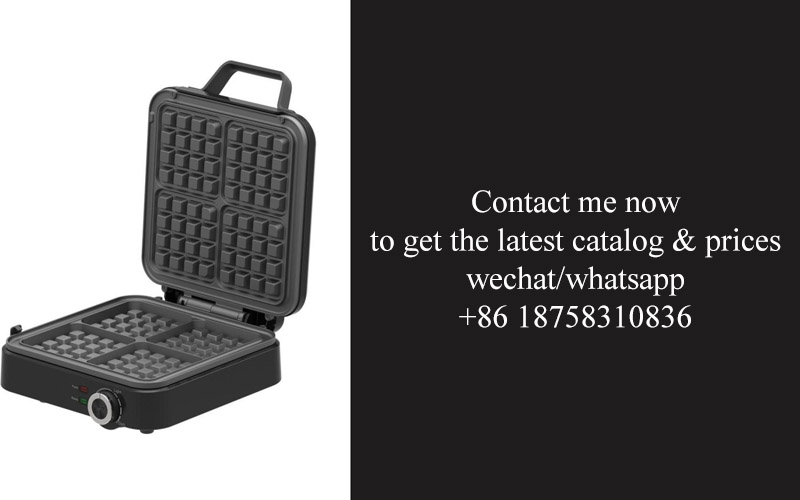
The mold making service plays a pivotal role in the manufacturing landscape, especially within the realm of OEM air fryers. This specialized process is not just about creating physical molds; it’s a cornerstone of innovation, efficiency, and customization in the production of these popular kitchen appliances.
In the world of OEM air fryers, the mold making service is the first step in transforming raw materials into a functional and aesthetically pleasing product. These molds are the blueprints for the air fryer’s shape, size, and structure, ensuring that every component fits precisely and functions harmoniously. The quality of the mold directly impacts the durability and performance of the air fryer, making it a critical factor in the overall manufacturing process.
The complexity of mold making is often underestimated. It involves a deep understanding of materials, advanced engineering techniques, and precision craftsmanship. For air fryers, molds need to be durable enough to withstand high temperatures and pressures, yet flexible enough to allow for efficient ejection of the finished product. This balance is achieved through a combination of expertise and state-of-the-art technology.
Customization is another area where mold making service excels. With the ability to create molds with intricate designs and unique features, OEM air fryers can be tailored to meet specific market demands or brand identities. This level of personalization allows manufacturers to stand out in a crowded market, offering consumers products that are not only functional but also visually appealing.
Moreover, the mold making service is integral to the scalability of air fryer production. As market demand fluctuates, the ability to quickly modify or create new molds allows manufacturers to adapt without a significant delay in production. This agility is crucial for staying competitive and responsive to consumer trends.
One cannot overlook the cost-effectiveness aspect of mold making. While the initial investment in creating a mold can be substantial, the long-term savings are substantial. Reusable molds reduce the need for raw materials and labor, leading to lower production costs. This efficiency translates into more competitive pricing for consumers and increased profit margins for manufacturers.
The precision of mold making also ensures that the air fryers are reliable and safe to use. The tight tolerances and consistent quality of the molds contribute to the durability of the appliance, reducing the likelihood of defects and extending the product’s lifespan. This reliability is a significant selling point in the consumer market, where trust in a product is paramount.
Furthermore, mold making service enables the integration of new technologies into air fryers. With the right molds, manufacturers can incorporate innovative features such as smart sensors, digital displays, and advanced cooking functions. These enhancements not only improve the user experience but also open up new market opportunities.
Innovation is a constant in the mold making process. Continuous improvements in materials and manufacturing techniques mean that molds can be made with greater precision and efficiency. This not only reduces lead times but also allows for the development of more complex and sophisticated air fryers.
The environmental impact of mold making is also a growing concern. As sustainability becomes a key consideration for consumers and businesses alike, the industry is responding with eco-friendly molds made from recycled materials and sustainable processes. This commitment to environmental responsibility is shaping the future of mold making, ensuring that it remains a sustainable and ethical industry.
In conclusion, the mold making service is a cornerstone of the OEM air fryer industry. It is a complex and essential process that influences everything from the product’s design and functionality to its cost and environmental impact. As the demand for air fryers continues to rise, the importance of a robust and innovative mold making service cannot be overstated. It is through this service that the future of kitchen appliances is shaped, bringing us closer to a world where technology and sustainability go hand in hand.

In the ever-evolving landscape of kitchen appliances, air fryers have emerged as a game-changer, offering a healthier alternative to deep-frying. The market for these appliances is not just growing; it’s expanding with innovative designs that cater to a wide range of consumer needs. Here’s a closer look at the innovative designs shaping the air fryer market:
Smart Technology IntegrationModern air fryers are no longer just appliances; they are smart devices. With the integration of Wi-Fi connectivity and smartphone apps, users can control their air fryers remotely, receive notifications, and even program recipes for optimal cooking times and temperatures. This level of technology ensures that even the busiest individuals can enjoy a freshly cooked meal with minimal effort.
Compact and Space-SavingOne of the standout features of the latest air fryers is their compact and space-saving designs. These appliances are designed to fit seamlessly into any kitchen, regardless of size. From countertop models to under-cabinet installations, the variety of sizes and shapes means there’s an air fryer for every kitchen layout, making them a practical addition to any cooking space.
Versatile Cooking FunctionsThe traditional air fryer has evolved into a versatile kitchen gadget capable of much more than just frying. New models come with a range of cooking functions, including roasting, baking, grilling, and even dehydrating. This versatility means that one appliance can replace several others, saving both space and energy.
Advanced Heat DistributionInnovative air fryers are equipped with advanced heat distribution systems that ensure even cooking throughout the basket. This is achieved through features like fan-forced air circulation and multi-layered heating elements. The result is a perfectly crispy exterior and a tender interior, every time.
Easy-to-Use InterfaceUser-friendliness is a key factor in the design of modern air fryers. The interfaces are intuitive, with digital displays and easy-to-navigate controls. Many models also come with pre-programmed settings for common foods like chicken, fries, and vegetables, making it simple for even the least technologically inclined to use the appliance.
Non-Toxic MaterialsAs health and environmental concerns grow, manufacturers are focusing on using non-toxic materials in the construction of air fryers. From BPA-free plastics to stainless steel interiors, these appliances are designed to be safe for both the user and the planet.
Energy EfficiencyEnergy-saving designs are becoming more prevalent in the air fryer market. With the ability to cook food at high temperatures using less oil and in a shorter amount of time, these appliances are not only healthier but also more cost-effective to operate.
Portability and Travel-FriendlyFor those who love to cook but are often on the move, portable air fryers have become a hit. These compact devices are designed to be taken on trips or stored easily when not in use. They often come with removable baskets and lids, making them perfect for solo cooks or those living in smaller living spaces.
Customizable Cooking SettingsThe latest air fryers offer customizable cooking settings, allowing users to adjust temperature and cooking time according to their specific preferences. This level of control ensures that users can achieve the perfect texture and flavor for their favorite dishes.
Eco-Friendly InitiativesMany brands are taking sustainability seriously, offering air fryers that are designed with eco-friendly initiatives in mind. This includes the use of recycled materials, energy-efficient components, and packaging that minimizes waste.
The air fryer market is continually innovating, driven by consumer demand for healthier, more efficient, and versatile kitchen appliances. As these innovative designs continue to evolve, they are poised to transform the way we cook and eat at home.
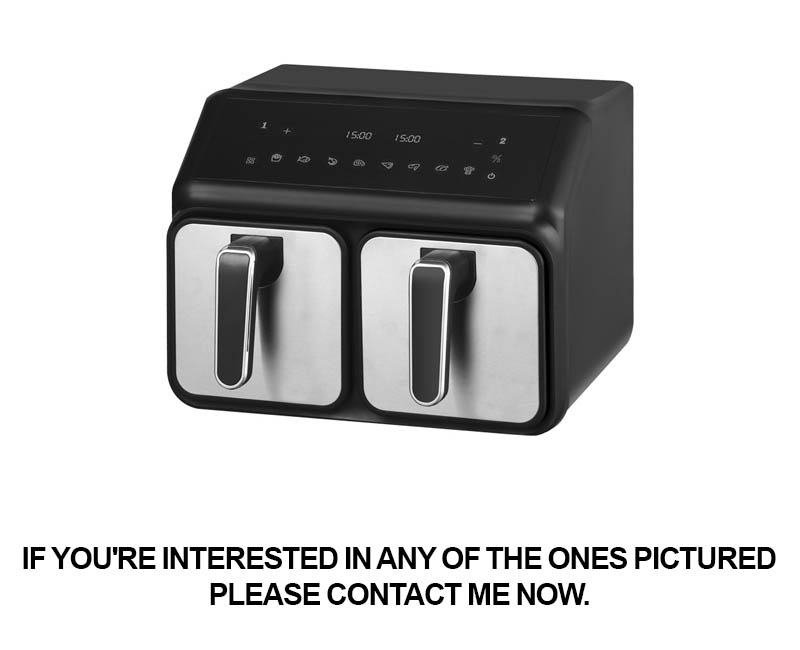
In today’s fast-paced culinary landscape, the demand for efficient and health-conscious cooking appliances has surged. Air fryers, in particular, have become a staple in modern kitchens, offering a guilt-free alternative to traditional frying methods. Let’s delve into the market insights and data analysis that underscore the significance of this trend.
The air fryer market has witnessed exponential growth over the past few years, driven by a variety of factors. One of the most compelling reasons is the shift towards healthier lifestyles. Consumers are increasingly aware of the negative health impacts of deep-frying and are seeking out healthier cooking alternatives. According to a report by Grand View Research, the global air fryer market size was valued at USD 1.9 billion in 2020 and is expected to reach USD 3.8 billion by 2028, growing at a CAGR of 12.5%.
One key aspect of the market that stands out is the preference for customized and innovative designs. Consumers are no longer satisfied with generic products; they seek appliances that not only fulfill their cooking needs but also reflect their personal style. This has led to a surge in OEM (Original Equipment Manufacturer) air fryers, which offer unique features and designs tailored to specific market segments.
Data from Statista reveals that the European Union is one of the largest markets for air fryers, with a significant portion of the population adopting healthier cooking habits. The trend is also gaining momentum in North America and Asia, as consumers become more health-conscious. The popularity of air fryers is not just confined to individual households; it’s also being embraced by the foodservice industry, with many restaurants and cafes incorporating them into their menus.
Another critical factor influencing the air fryer market is the rise of smart technology. Modern air fryers come equipped with features like temperature control, timers, and even Bluetooth connectivity, allowing users to monitor and control their cooking process remotely. According to a study by MarketsandMarkets, the smart kitchen appliances market is projected to reach USD 50.6 billion by 2026, with air fryers being a key component of this growth.
The data also highlights the importance of sustainability in the air fryer market. As environmental concerns grow, consumers are more likely to purchase appliances that are energy-efficient and have a smaller carbon footprint. Air fryers, which use significantly less oil than traditional frying methods, align perfectly with these sustainability goals. A report by the European Environment Agency states that reducing food waste and adopting energy-efficient cooking methods can have a substantial impact on reducing greenhouse gas emissions.
Furthermore, the air fryer market is witnessing a surge in the development of healthier oil options. Manufacturers are now offering air fryers compatible with olive oil, avocado oil, and other healthier fats, which not only enhance the flavor of the food but also contribute to the appliance’s health benefits.
The market insights and data analysis also shed light on the competitive landscape of the air fryer market. Key players are constantly innovating to stay ahead of the curve, with some focusing on product design, others on technology integration, and still others on marketing strategies. For instance, Philips, a leading brand in the kitchen appliance sector, has been investing heavily in research and development to create air fryers that combine health, convenience, and style.
In conclusion, the air fryer market is a dynamic and rapidly growing sector, driven by consumer demand for healthier, more efficient, and customizable cooking solutions. The market insights and data analysis indicate that the trend is likely to continue, with a focus on smart technology, sustainability, and health-conscious innovations. As the market evolves, it will be interesting to see how OEM air fryers with mold making services contribute to shaping the future of kitchen appliances.
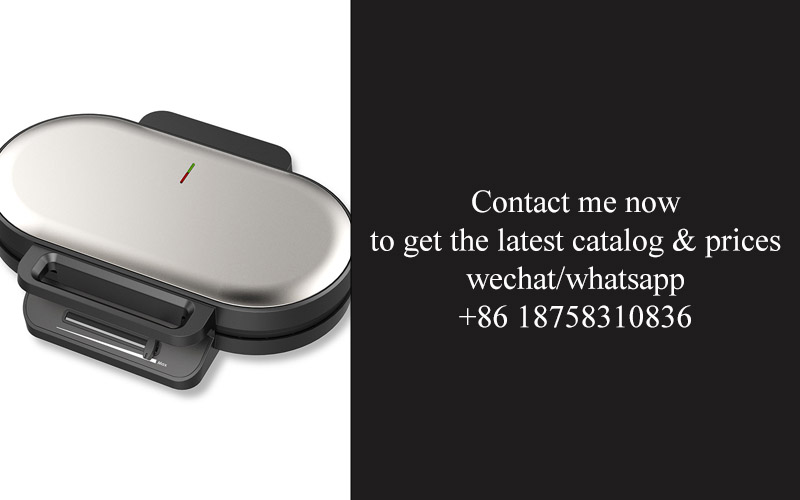
In the realm of kitchen appliances, customizing air fryers through mold making has emerged as a game-changer. This process allows manufacturers to tailor their products to meet specific market demands and consumer preferences. Let’s delve into the benefits that come with this innovative approach.
1. Enhanced AestheticsCustom mold-making services provide the opportunity to create air fryers with unique and appealing designs. From sleek, modern lines to vibrant colors and distinctive patterns, the aesthetic appeal of a product can significantly impact consumer interest. By investing in custom molds, companies can differentiate their air fryers from competitors, making them more attractive on store shelves.
2. Improved FunctionalityCustomization through mold making extends beyond just aesthetics. It allows for the integration of innovative features that enhance the functionality of air fryers. Whether it’s incorporating non-stick surfaces that make cleaning easier or adding features like digital temperature controls for precise cooking, these enhancements can greatly improve the user experience.
3. Enhanced Brand IdentityWhen a company invests in custom mold-making services, it’s not just creating a product; it’s crafting a piece that reflects its brand identity. Customized air fryers can carry the brand’s logo, colors, and even unique design elements that resonate with the brand’s values and target audience. This level of personalization helps in building brand loyalty and recognition.
4. Cost-Effective ProductionWhile custom mold-making might seem like an expensive endeavor, it can be a cost-effective solution in the long run. By creating molds for a specific design, manufacturers can produce a large number of units without the need for constant redesigns. This bulk production can lead to economies of scale, reducing the per-unit cost and making the product more affordable for consumers.
5. Market ResponsivenessThe ability to quickly adapt to market trends and consumer feedback is crucial in the competitive appliance market. Custom mold-making services enable manufacturers to respond swiftly to changing preferences. Whether it’s a new material that’s trending or a feature that’s in high demand, having the flexibility to create custom molds allows for agility in product development.
6. Unique Selling Proposition (USP)A product with a strong USP can capture the attention of consumers and give a brand a competitive edge. Custom air fryers, with their unique designs and features, can serve as a USP. They can become the talk of the town, generating buzz and curiosity among consumers, which can lead to increased sales and market share.
7. Customized Solutions for Different MarketsDifferent regions and markets have varying preferences and requirements. Custom mold-making services allow for the creation of air fryers that cater to specific needs. For example, certain markets may prefer air fryers with larger capacities, while others might value portability. This customization ensures that the product resonates with a broader consumer base.
8. Longevity and DurabilityHigh-quality molds can lead to the production of air fryers that are not only visually appealing but also durable. By using advanced materials and precision engineering, molds can produce parts that withstand the test of time, reducing the likelihood of product recalls and improving customer satisfaction.
9. Streamlined Supply ChainCustom mold-making can streamline the supply chain by reducing the number of suppliers needed. Instead of sourcing parts from various vendors, manufacturers can rely on a single source for both the molds and the finished products. This integration can lead to better quality control and more efficient production processes.
10. Future-ProofingAs technology evolves, so does the kitchen appliance market. By investing in custom mold-making, companies can future-proof their products. They can design air fryers that are adaptable to new technologies, such as smart connectivity, which allows for remote control and monitoring. This forward-thinking approach ensures that the products remain relevant in a rapidly changing landscape.
In conclusion, the benefits of customizing air fryers through mold making are multifaceted. From enhancing aesthetics and functionality to fostering brand identity and market responsiveness, the advantages are clear. As the kitchen appliance market continues to grow, embracing customization will be key to staying ahead of the curve and meeting the dynamic needs of consumers.
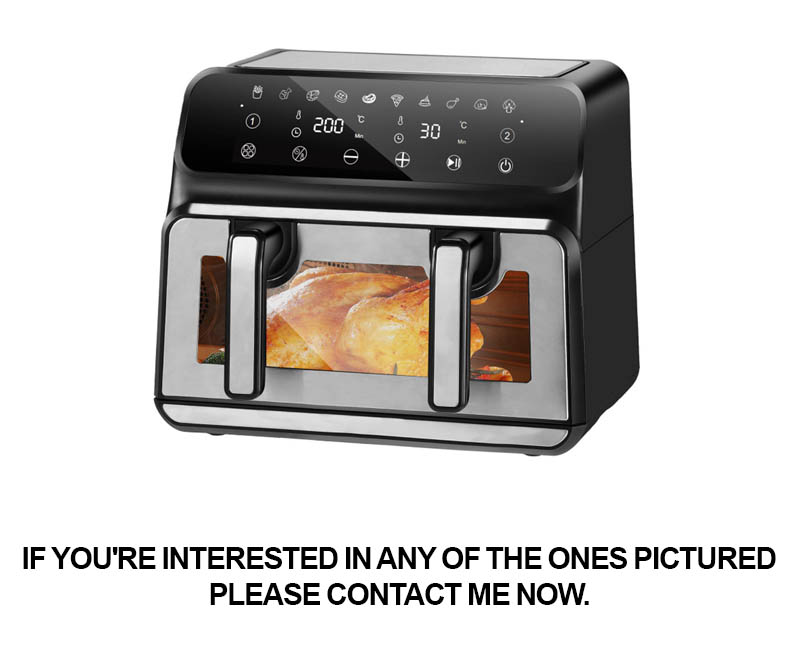
In the realm of OEM air fryers, several success stories have emerged, showcasing the transformative impact of customized solutions. These case studies highlight how mold making has played a pivotal role in crafting air fryers that not only meet but exceed market expectations.
A leading kitchen appliance manufacturer, known for its innovative products, turned to mold making to create a unique air fryer design. The challenge was to develop a model that was not only efficient but also visually appealing. The mold-making process allowed for intricate designs that integrated modern aesthetics with functionality. The result was a sleek, high-performance air fryer that quickly became a favorite among consumers.
Another case study involves a small startup that sought to enter the competitive air fryer market. With limited resources, the company needed a cost-effective way to produce a distinctive product. By opting for mold making, the startup was able to create a custom air fryer that featured a unique shape and multiple cooking functions. The custom mold enabled the startup to produce a high-quality product at a fraction of the cost of traditional manufacturing methods.
A major international brand wanted to expand its product line and entered the air fryer market with a bang. The company knew that to stand out, it needed a product that offered both advanced technology and a stylish design. The mold-making service was crucial in producing a line of air fryers that were not only efficient but also visually striking. The custom molds allowed for intricate details and a seamless user experience, leading to high customer satisfaction and increased sales.
In a different scenario, a well-established manufacturer faced the challenge of meeting the growing demand for air fryers without compromising on quality. By utilizing mold making, the company was able to scale up production while maintaining the integrity of its products. The custom molds ensured consistency in design and performance, which helped the manufacturer maintain its reputation for excellence.
One particularly interesting case study involves a company that aimed to create an eco-friendly air fryer. The mold-making process was instrumental in developing a model that was not only energy-efficient but also made from sustainable materials. The custom molds allowed for the precise shaping of the air fryer, ensuring that it could be produced in a way that minimized waste and had a lower carbon footprint.
Another success story comes from a brand that wanted to cater to health-conscious consumers. The company developed a line of air fryers that were designed to be compact and portable, making them perfect for on-the-go cooking. The mold-making service enabled the creation of a lightweight yet durable air fryer that was a hit among consumers looking for a healthier alternative to traditional cooking methods.
In the world of OEM air fryers, mold making has also been a key factor in the customization of accessories. For example, a company that produces air fryers for commercial use needed to create a range of custom baskets and inserts that could accommodate various types of food. The mold-making process allowed for the creation of these accessories with specific dimensions and features, enhancing the versatility of the air fryers.
These case studies demonstrate the versatility and importance of mold making in the air fryer market. From creating unique designs to improving efficiency and sustainability, custom molds have been a game-changer for manufacturers looking to innovate and meet the evolving demands of consumers. As the market continues to grow, the role of mold making in shaping the future of air fryers is undeniable.
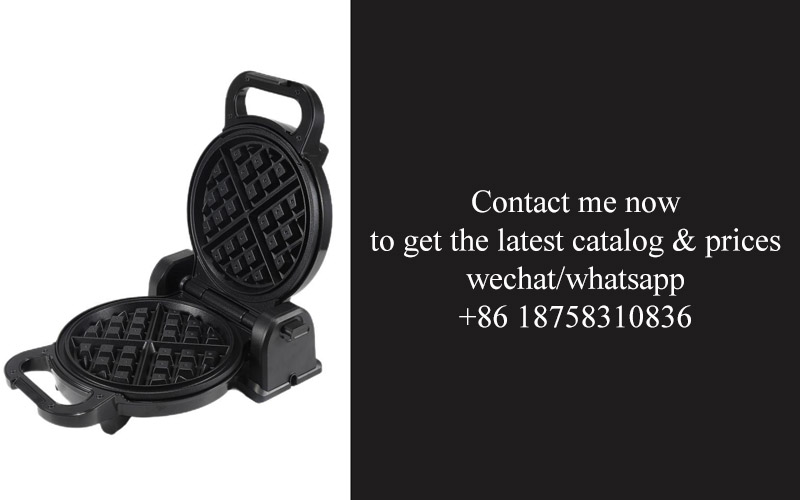
In the competitive landscape of the kitchen appliance industry, challenges are a constant. From market fluctuations to technological advancements, the road to success is paved with hurdles. Let’s delve into some of the key challenges faced by OEM air fryer manufacturers and explore the innovative solutions that are reshaping the industry.
Adapting to Rapid Technological Advancements: The pace at which technology evolves can be overwhelming. OEM air fryer manufacturers must stay abreast of the latest innovations to ensure their products remain cutting-edge. One solution is to invest heavily in R&D, fostering a culture of innovation within the company.
Regulatory Compliance: Different regions have varying regulations regarding product safety and emissions. Navigating these complexities can be daunting. A proactive approach involves establishing a strong regulatory compliance team that is well-versed in international standards and can quickly adapt to changes.
Market Saturation: With the growing popularity of air fryers, the market is becoming increasingly saturated. Standing out from the competition requires a unique selling proposition (USP). Many manufacturers are turning to customization services to offer tailored solutions that meet specific customer needs.
Supply Chain Disruptions: Global supply chain disruptions have become a common occurrence, impacting production timelines and costs. To mitigate this risk, OEMs are diversifying their supply chains, establishing multiple sourcing channels, and adopting flexible manufacturing processes.
Consumer Preferences: Consumer preferences are constantly evolving, and OEMs must be able to anticipate these changes. Regular market research and customer feedback loops are essential for staying attuned to the latest trends. By doing so, manufacturers can adjust their product lines and marketing strategies accordingly.
Cost Management: Maintaining profitability while competing on price is a significant challenge. OEMs are finding ways to optimize their operations, including streamlining production processes, negotiating better deals with suppliers, and investing in energy-efficient technologies.
Quality Control: Ensuring consistent product quality is paramount in the appliance industry. OEMs are implementing rigorous quality control measures at every stage of production, from raw material selection to final product testing. This includes investing in advanced testing equipment and training employees to adhere to strict quality standards.
Sustainability Concerns: With the increasing focus on sustainability, OEMs are under pressure to reduce their environmental footprint. Solutions include sourcing eco-friendly materials, designing products for longevity, and exploring recycling and disposal programs for end-of-life appliances.
Global Expansion: Expanding into new markets requires a deep understanding of local cultures, preferences, and regulations. OEMs are engaging with local partners, adapting their marketing strategies, and customizing products to cater to specific regional needs.
E-commerce Integration: The rise of e-commerce has transformed the way consumers purchase appliances. OEMs are adapting by optimizing their online presence, enhancing their e-commerce platforms, and leveraging digital marketing to reach a broader audience.
Training and Development: To stay competitive, OEMs must invest in the training and development of their workforce. This includes upskilling employees with new technologies and fostering a culture of continuous learning.
Brand Reputation: Maintaining a strong brand reputation is crucial. OEMs are focusing on building trust through transparent communication, reliable customer service, and delivering on promises.
By addressing these challenges with creative and strategic solutions, OEM air fryer manufacturers are not only surviving but thriving in a dynamic and ever-evolving industry.
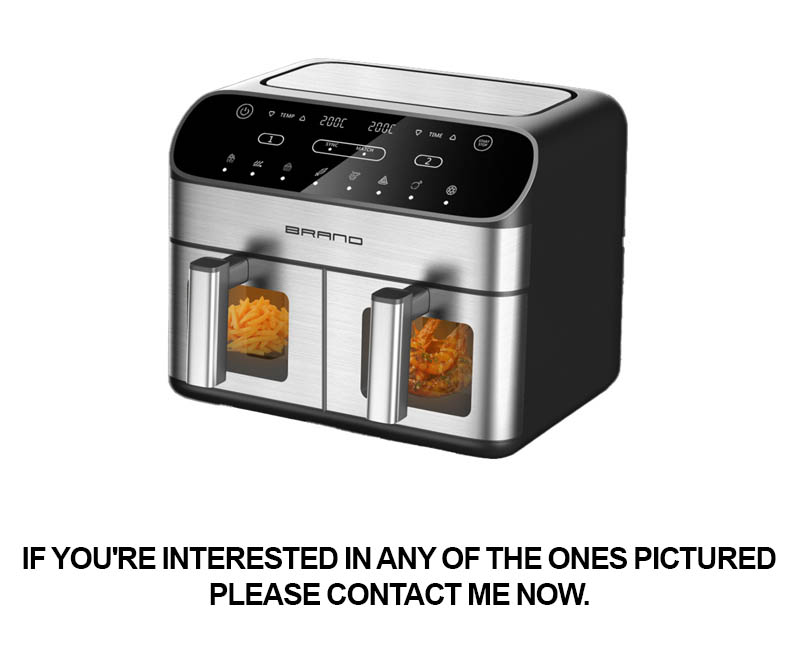
In today’s rapidly evolving kitchen appliance market, embracing the future means staying ahead of the curve. The landscape is shaped by innovative technologies, changing consumer preferences, and the relentless pursuit of efficiency and sustainability. Let’s delve into some key aspects that define the future of kitchen appliances.
Technology IntegrationThe integration of smart technology into kitchen appliances is not just a trend; it’s a necessity. Devices that can be controlled via smartphones, offering real-time data and predictive maintenance, are becoming the norm. Imagine an oven that adjusts its temperature based on the type of food you’re cooking, or a refrigerator that orders groceries when you’re running low on essentials. This level of connectivity and intelligence is poised to transform the way we interact with our kitchen gadgets.
Energy EfficiencyWith growing environmental concerns, energy efficiency has become a cornerstone in the kitchen appliance industry. Manufacturers are increasingly focusing on creating appliances that consume less energy without compromising performance. The push for energy-saving models is not just about reducing utility bills; it’s about contributing to a greener planet. Advanced insulation, smart heating elements, and energy-saving modes are just a few ways appliances are becoming more eco-friendly.
User ExperienceThe future of kitchen appliances lies in enhancing the user experience. This means focusing on intuitive interfaces, ergonomic designs, and personalized features. Imagine a kitchen where appliances learn from your habits and preferences, adjusting settings to your liking. Touchscreens are becoming more common, and voice assistants are being integrated to make cooking less about managing gadgets and more about enjoying the process.
Customization and PersonalizationConsumers today are not just looking for one-size-fits-all solutions; they want appliances that cater to their specific needs. Customization is key, and mold making services are playing a pivotal role in this trend. From unique shapes and sizes to specialized features, the ability to tailor appliances to individual tastes and kitchen layouts is opening up a world of possibilities. This level of personalization not only satisfies the consumer’s desire for a unique kitchen aesthetic but also ensures functionality and efficiency.
SustainabilitySustainability is not just a buzzword; it’s a fundamental shift in how we approach product development. From sourcing materials to manufacturing processes, the industry is looking at ways to minimize its environmental footprint. Appliances made from recycled materials, those that are designed for longevity, and those that can be easily repaired or recycled at the end of their life cycle are becoming more prevalent. The emphasis is on creating products that are not just good for the consumer but also for the planet.
Health and WellnessThe rise of health-conscious consumers has also influenced the kitchen appliance market. Appliances that promote healthy cooking methods, such as air fryers and steam ovens, are gaining popularity. These devices offer a healthier alternative to deep frying and allow for a variety of cooking styles that are both nutritious and delicious. The future will likely see even more innovation in this area, with appliances that not only cook food but also provide nutritional information and cooking tips.
Safety and SecuritySafety is a non-negotiable in the kitchen, and the future of appliances will continue to prioritize it. Smart sensors, child locks, and anti-overheat features are just a few safety measures that are becoming standard. As appliances become more connected, ensuring cybersecurity will be crucial. The industry must balance convenience with security to protect consumers’ personal information and prevent potential hazards.
Economic ConsiderationsThe economic landscape is also shaping the future of kitchen appliances. Consumers are more price-conscious than ever, and affordability is a key factor in purchasing decisions. While high-tech features can add to the cost, manufacturers are finding ways to innovate without breaking the bank. This could mean offering modular appliances that allow consumers to upgrade features over time, or creating entry-level models that still offer the basics with a focus on quality and reliability.
GlobalizationThe kitchen appliance market is becoming increasingly global, with manufacturers and consumers alike looking beyond national borders. This means that appliances need to be adaptable to different cultural preferences and kitchen layouts. The ability to produce appliances that can cater to diverse markets is a significant challenge but also a great opportunity for innovation and growth.
In conclusion, the future of kitchen appliances is a blend of technological advancement, environmental responsibility, and consumer-centric design. As the industry continues to evolve, it will be fascinating to see how these factors interplay to create the kitchen appliances of tomorrow.